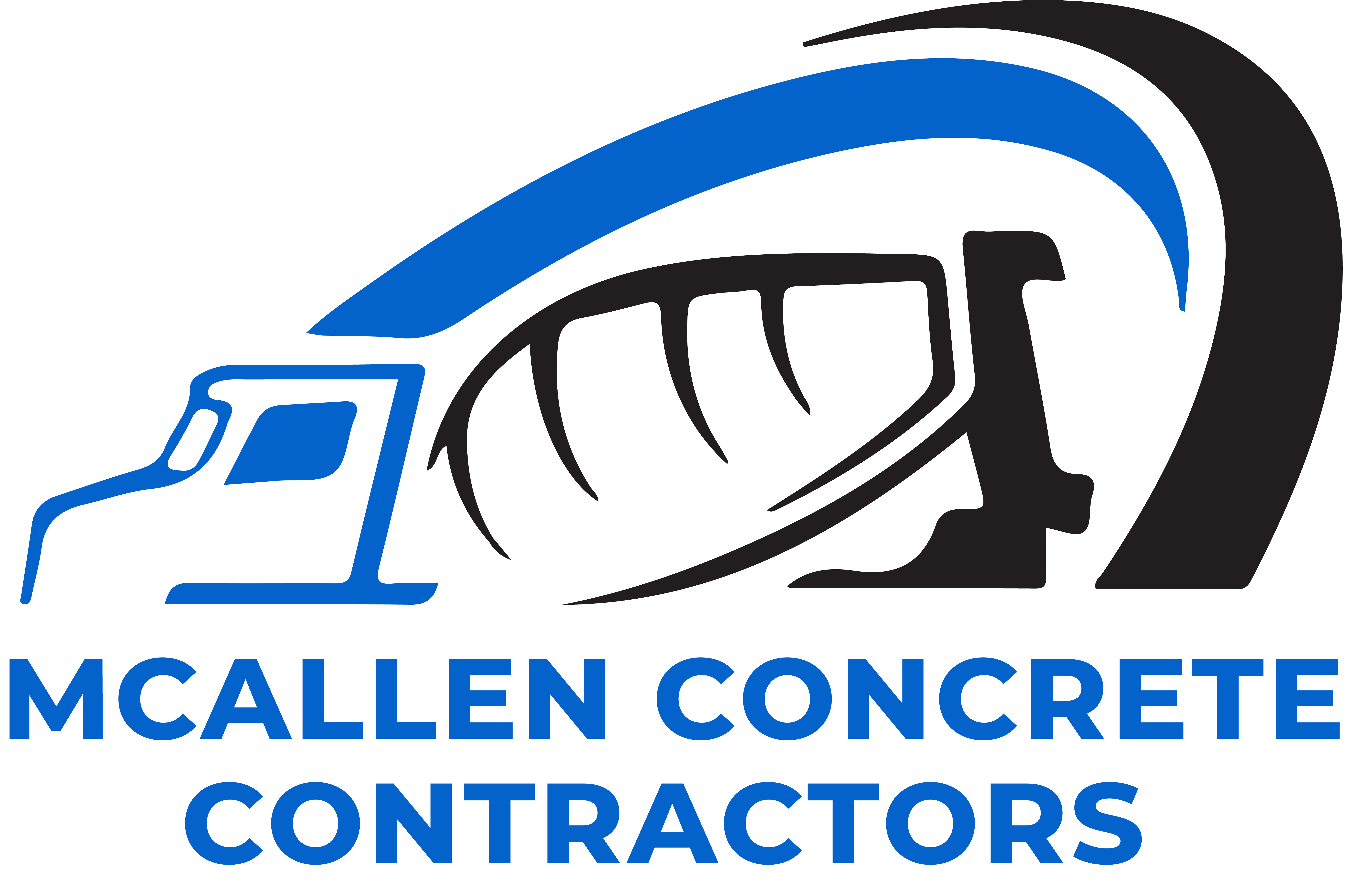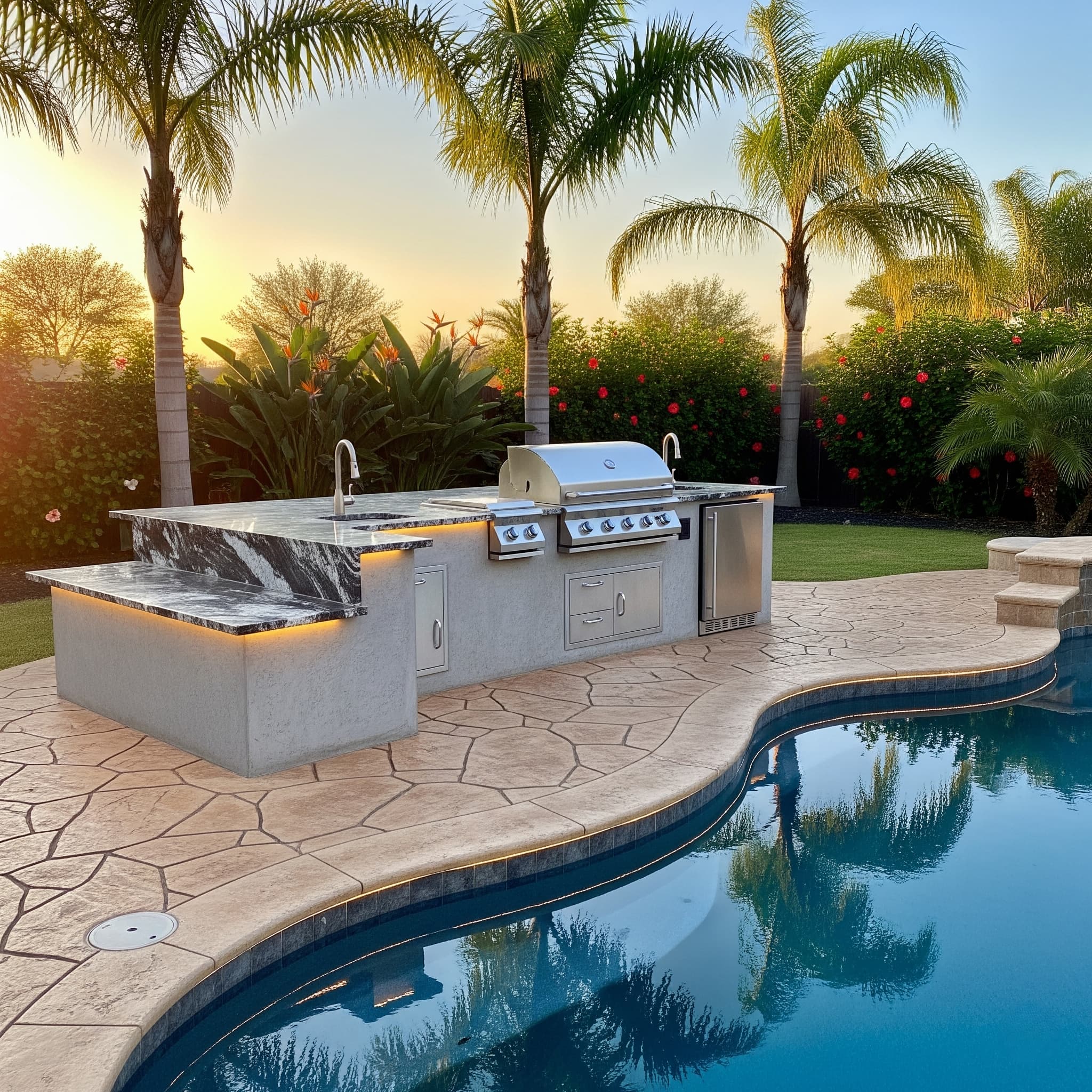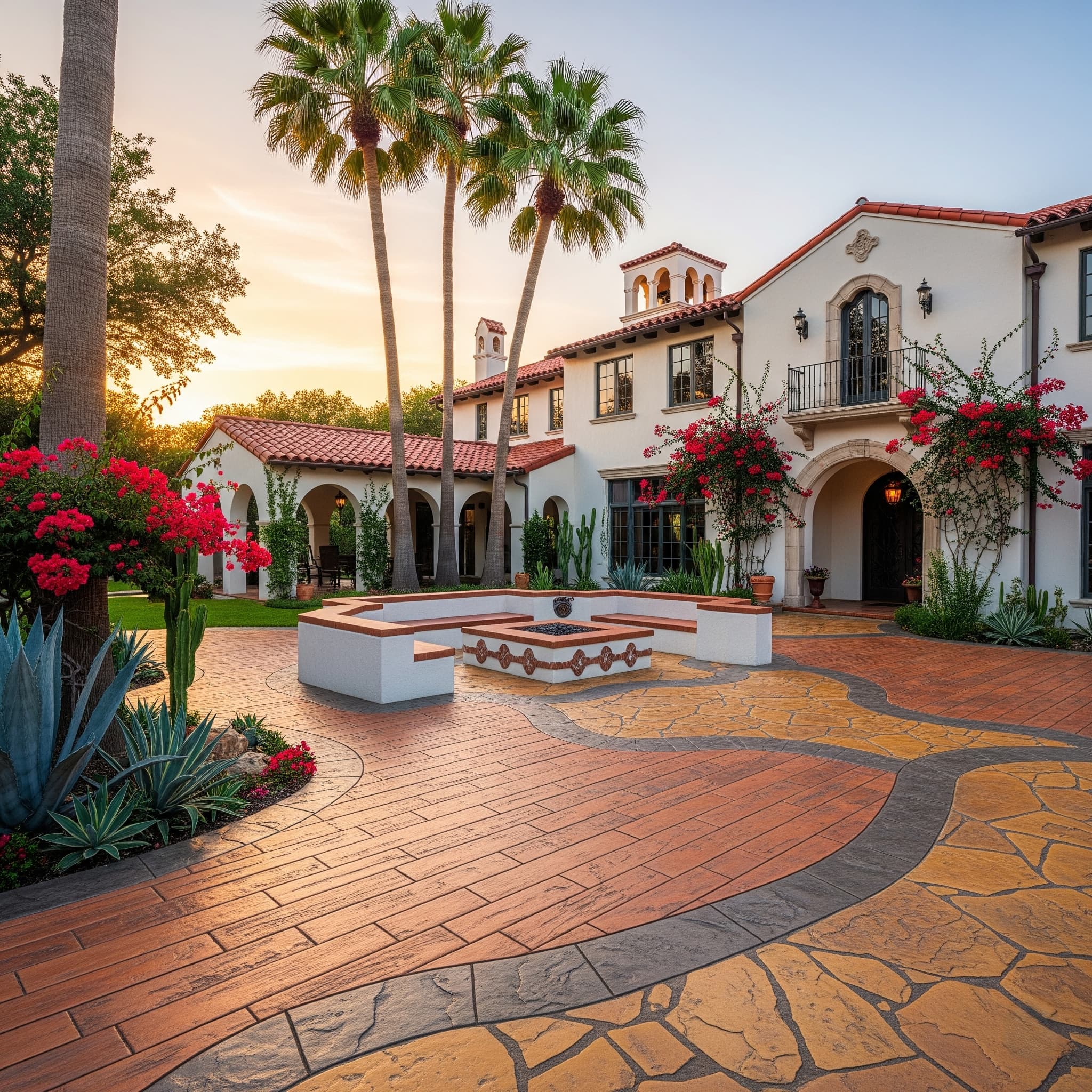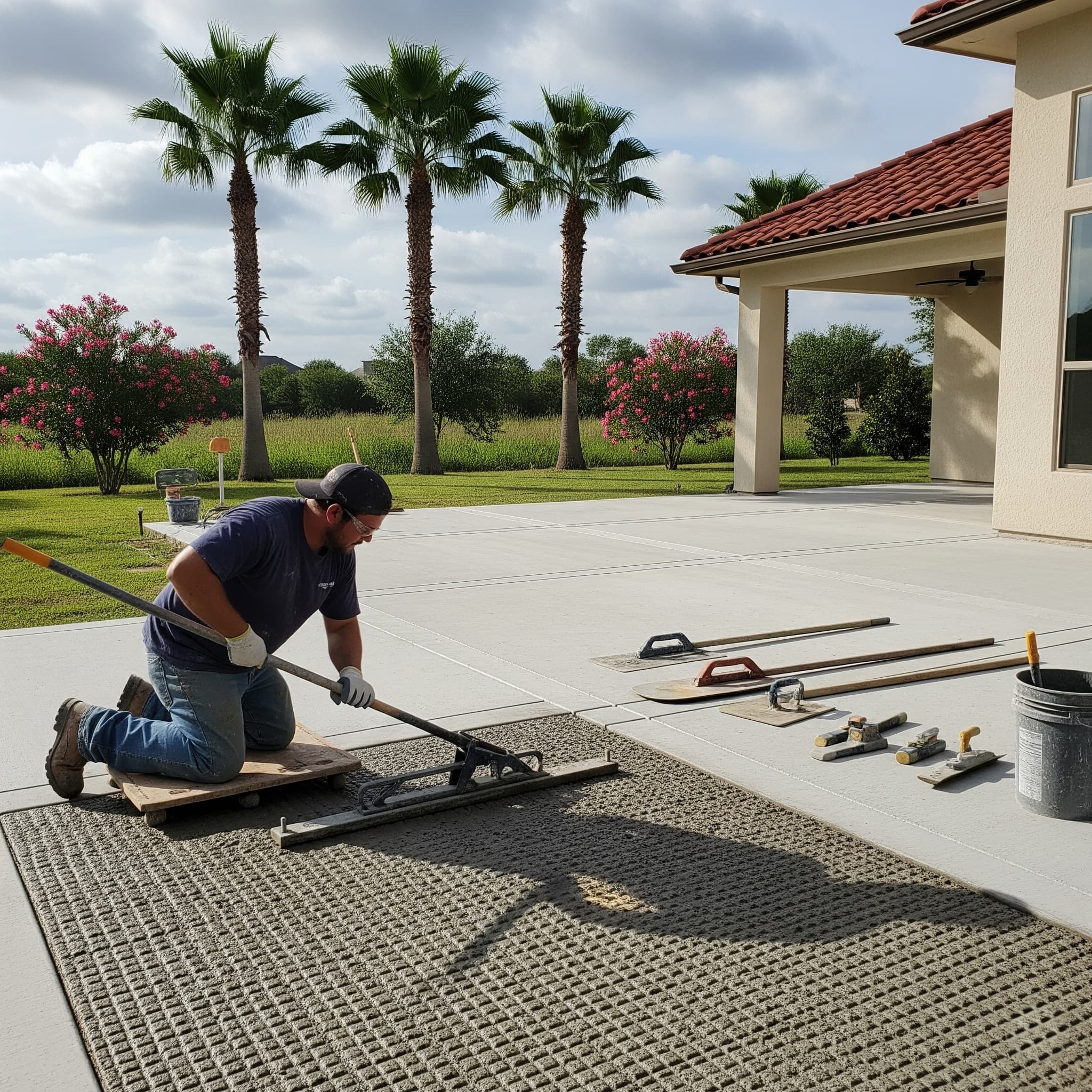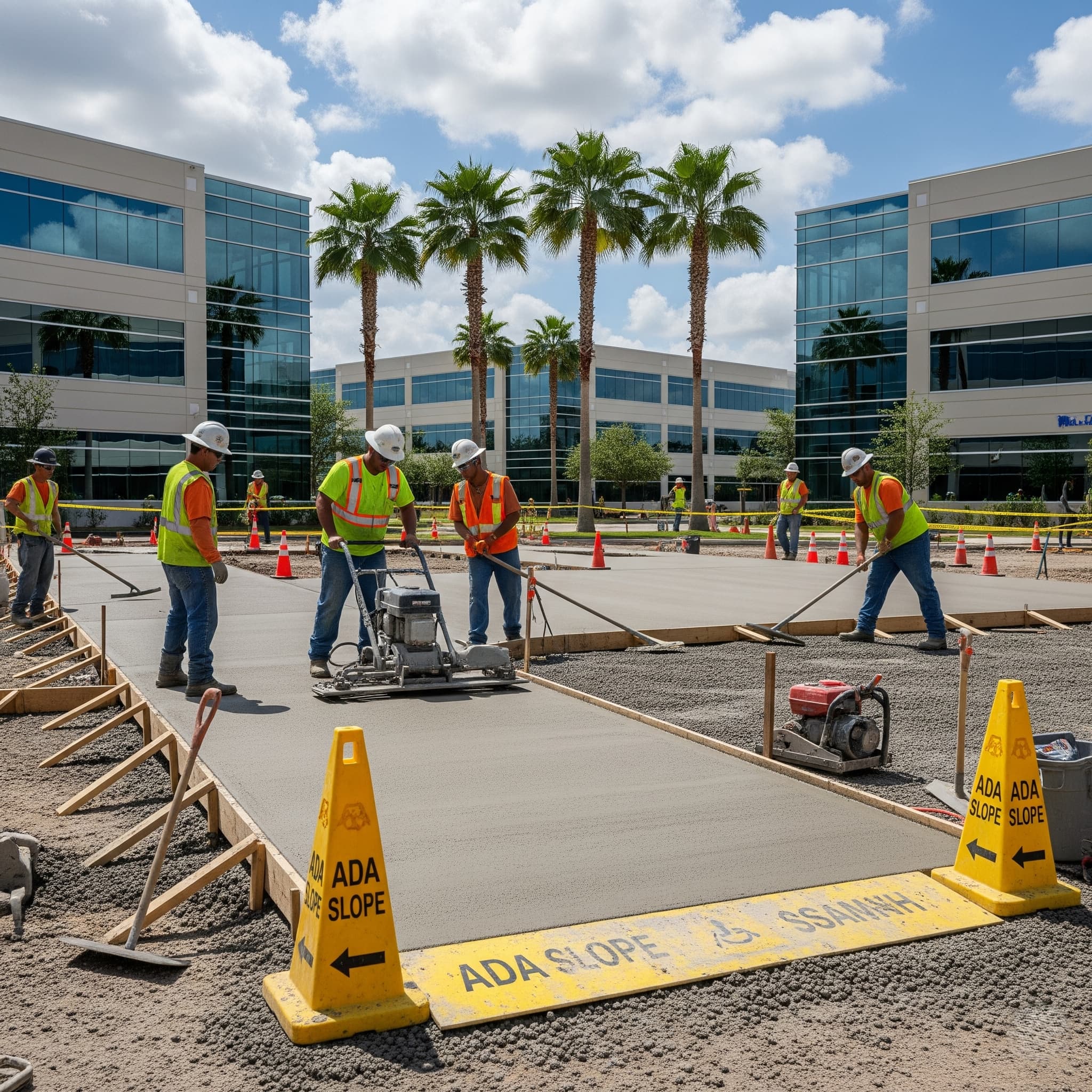
Slip-Resistant Concrete Flooring for McAllen Outdoors
Concrete Flooring McAllen
McAllen’s subtropical climate presents unique challenges for outdoor concrete flooring, requiring specialized slip-resistant solutions that perform reliably in humid conditions. With relative humidity often exceeding 70% during summer months and temperatures reaching above 100°F, outdoor concrete surfaces need enhanced safety features to prevent accidents. Professional slip resistant concrete surfaces combine proven techniques with modern materials to create safe, durable flooring solutions. Whether you’re installing patios near Firemen’s Park or pool decks in residential areas, proper slip resistance protects family and guests year-round. Understanding the relationship between McAllen’s climate conditions and concrete performance helps ensure optimal safety and longevity.
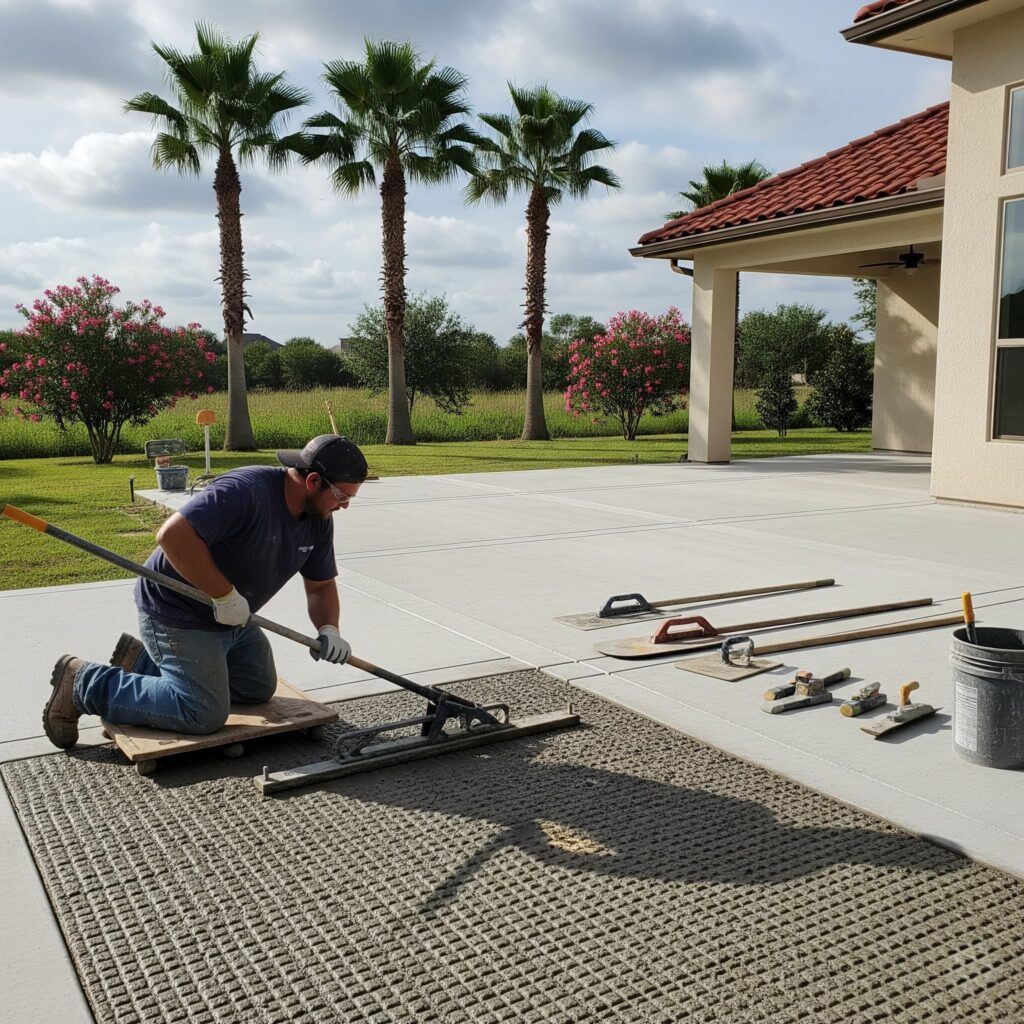
Understanding Slip Resistance in McAllen’s Climate
Slip resistance is measured using the coefficient of friction (COF), which quantifies the resistance between a person’s footwear and the concrete surface. The Occupational Safety and Health Administration (OSHA) requires outdoor surfaces to achieve a minimum COF of 0.5 for safety, while optimal performance targets range from 0.6 to 0.8 depending on application.
McAllen’s humid conditions create additional challenges as moisture, condensation, and organic growth can significantly reduce surface friction. Summer temperatures combined with high humidity create condensation that makes smooth concrete extremely hazardous, particularly during early morning hours when surfaces cool.
Rainfall patterns from May through October add another layer of complexity, requiring surfaces that maintain traction when wet. Professional outdoor concrete flooring McAllen installations address these challenges through proper design, appropriate texturing techniques, and suitable finishing materials.
Climate-Specific Safety Considerations
Temperature fluctuations between seasons affect concrete expansion and contraction, potentially creating uneven surfaces that increase trip hazards. Proper joint placement and reinforcement prevent these issues while maintaining consistent surface texture throughout thermal cycles.
Organic growth, including algae, mildew, and moss, thrives in McAllen’s humid environment, creating slippery biofilms on concrete surfaces. Effective slip-resistant treatments incorporate antimicrobial properties or create textures that prevent organic accumulation.
Professional Texturing Techniques
Broom finishing remains the most common method for creating slip-resistant outdoor surfaces, using stiff-bristled brooms to create directional grooves in partially cured concrete. The depth and spacing of these grooves determine traction levels, with deeper textures providing enhanced grip in wet conditions.
For McAllen applications, broom patterns should direct water toward drainage areas while providing consistent traction across the entire surface. Professional contractors adjust broom pressure and timing based on concrete consistency, ambient temperature, and humidity levels to achieve optimal results.
Exposed aggregate finishes offer superior slip resistance by revealing textured stone particles embedded in the concrete surface. This technique works particularly well for pool decks, patios, and walkways where maximum traction is essential, especially around areas like the McAllen Nature Center trails or residential outdoor spaces.
Advanced Surface Treatments
Rock salt finishing creates unique textures by pressing coarse salt crystals into fresh concrete, then washing them away after curing to leave distinctive indentations. This technique provides excellent traction while creating visually appealing surface patterns suitable for decorative applications.
Stamped concrete with anti-slip coatings combines aesthetic appeal with safety performance. Specialized release agents and sealers maintain the decorative appearance while providing necessary traction for safe pedestrian traffic in all weather conditions.
Anti-Slip Coatings and Sealers
Modern anti-slip concrete coatings provide additional traction layers that can be applied to existing surfaces or new installations. These water-based coatings penetrate concrete pores while adding textured particles that enhance grip without significantly altering appearance.
Penetrating sealers with friction additives offer dual benefits by protecting concrete from moisture intrusion while maintaining or improving surface traction. These products work particularly well in McAllen’s climate by reducing water absorption that can lead to surface deterioration and algae growth.
Epoxy-based systems with broadcast aggregates create highly durable, chemical-resistant surfaces suitable for heavy-use areas. While primarily used for industrial applications, residential versions provide excellent performance for garage floors, workshops, and covered outdoor areas.
Specialty Coating Applications
Polymer-modified coatings resist UV degradation from intense McAllen sunlight while maintaining flexibility through temperature cycles. These coatings often incorporate glass beads or ceramic particles that provide long-lasting traction without wearing smooth over time.
Color-matched safety coatings allow slip resistance enhancement without compromising aesthetic design. Multiple color options enable integration with existing architectural elements while meeting safety requirements for commercial and residential applications.
Design Considerations for Outdoor Applications
Proper drainage design prevents water accumulation that creates slip hazards regardless of surface texture. Subtle slopes directing water away from pedestrian areas, combined with appropriate drain placement, maintain safe conditions during McAllen’s frequent thunderstorms.
Traffic pattern analysis determines optimal texture placement and intensity. High-traffic areas require more aggressive texturing, while transitional zones may use graduated approaches that balance safety with comfort for barefoot use around pools or patios.
Integration with landscape design ensures slip-resistant surfaces complement overall property aesthetics while maintaining safety performance. Professional planning considers sight lines, lighting, and material transitions that affect both appearance and functionality.
Maintenance and Longevity Planning
Surface cleaning requirements vary with texture depth and coating type, requiring appropriate maintenance schedules to preserve slip resistance. Power washing techniques must balance cleaning effectiveness with texture preservation to maintain long-term safety performance.
Periodic resealing or coating renewal maintains protection against McAllen’s challenging climate conditions. Professional assessment determines optimal timing based on surface wear, weather exposure, and performance requirements.
Installation Best Practices
Timing concrete placement during optimal weather conditions ensures proper texturing and curing in McAllen’s variable climate. Early morning starts avoid the afternoon heat while allowing sufficient working time for specialized finishing techniques.
Temperature and humidity monitoring during installation prevents surface defects that compromise safety performance. Professional contractors use weather data and experience to adjust techniques for prevailing conditions, ensuring consistent results regardless of seasonal variations.
Quality control testing during installation verifies slip resistance meets specified requirements. On-site COF testing provides immediate feedback, allowing adjustments before the concrete reaches final set, preventing costly corrections later.
Curing and Protection Methods
Proper curing techniques preserve surface texture while developing optimal concrete strength. Curing compounds must allow texture preservation while preventing rapid moisture loss that can cause surface defects or reduced slip resistance.
Weather protection during curing prevents rain damage to fresh textures while maintaining appropriate moisture levels for complete hydration. Temporary coverings and climate control ensure professional results regardless of weather conditions during installation.
Cost Factors and Value Considerations
Slip-resistant surface treatments add modest costs compared to potential liability from accidents or injuries. Initial investments in proper safety features provide long-term value through reduced insurance risks and enhanced property usability in all weather conditions.
Maintenance cost comparisons favor textured surfaces that resist staining and organic growth compared to smooth concrete, requiring frequent cleaning. Properly installed slip-resistant surfaces often require less ongoing maintenance while providing superior safety performance.
Property value enhancement from professional safety installations appeals to insurance companies and potential buyers who recognize the benefits of comprehensive outdoor safety planning.
Compliance and Safety Standards
Americans with Disabilities Act (ADA) requirements specify maximum and minimum slip resistance levels for accessible surfaces. Professional installations ensure compliance with federal guidelines while meeting local building code requirements.
Insurance considerations increasingly factor surface safety into premium calculations and liability coverage. Documented slip-resistant installations provide evidence of reasonable safety precautions that can influence claim outcomes and coverage availability.
Professional liability standards require contractors to understand and implement appropriate safety measures based on local conditions and intended use patterns. Proper documentation and testing protect both contractors and property owners.
Choosing Professional Installation
Experienced concrete contractors understand the relationship between McAllen’s climate, surface treatments, and long-term performance. Professional installation ensures optimal texture application, appropriate material selection, and proper curing techniques that maximize safety and durability.
Quality assurance through testing and documentation provides confidence in safety performance while meeting insurance and liability requirements. Professional contractors maintain equipment and expertise for consistent results across various applications and conditions.
Our team specializes in outdoor concrete flooring McAllen applications that balance safety, aesthetics, and durability in challenging climate conditions. From initial design through final testing, we ensure your outdoor concrete surfaces provide reliable traction and long-term value. Professional installation techniques, premium materials, and thorough quality control deliver results that protect your family and investment for years to come. McAllen Concrete Contractors combines decades of local experience with advanced safety technologies to create outdoor concrete surfaces that perform reliably in every season.
